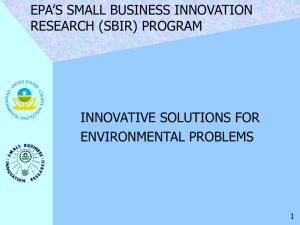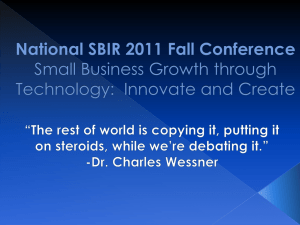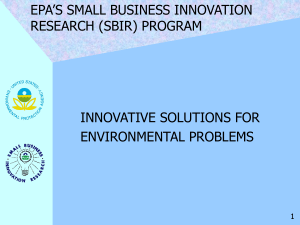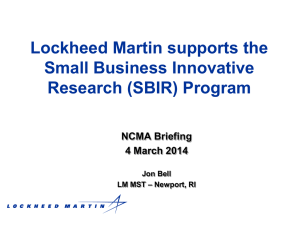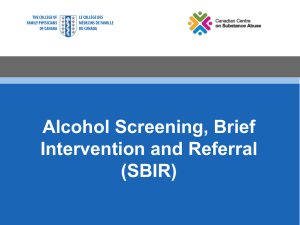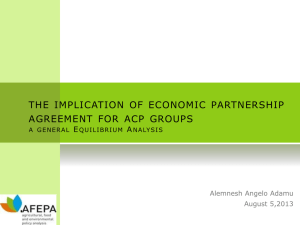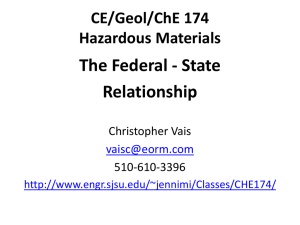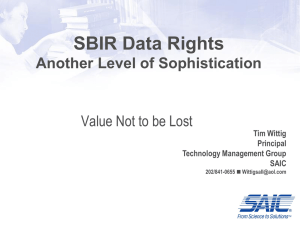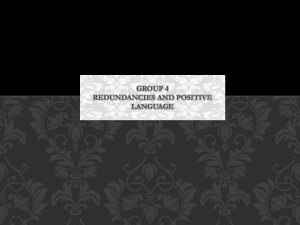EPA: April Richards
advertisement
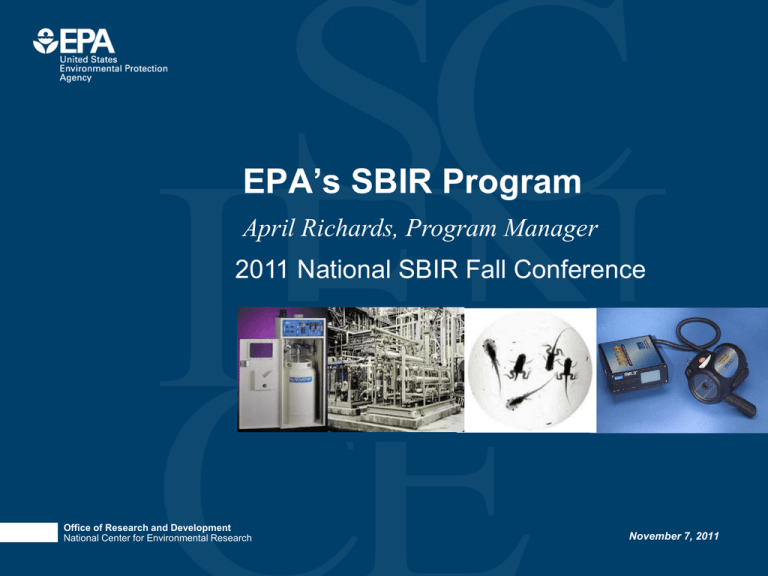
EPA’s SBIR Program April Richards, Program Manager 2011 National SBIR Fall Conference Photo image area measures 2” H x 6.93” W and can be masked by a collage strip of one, two or three images. The photo image area is located 3.19” from left and 3.81” from top of page. Each image used in collage should be reduced or cropped to a maximum of 2” high, stroked with a 1.5 pt white frame and positioned edge-to-edge with accompanying images. Office of Research and Development National Center for Environmental Research November 7, 2011 EPA-SBIR Mission • EPA: Protect human health and the environment • EPA SBIR: Develop and commercialize innovative technologies to support the Agency’s mission 1 EPA SBIR Program Overview • Timing: Annual Competitive Solicitations • Significant cross-agency involvement in topic development and proposal review • Budget: Award about ~$5 million dollars annually 2 EPA SBIR Awards • Phase I 3 –Proof of Concept –$80,000 –6 months • Phase II –Develop Phase I technology with focus on commercialization –Base $300,000 • Commercialization Option ($70,000) –2 years EPA SBIR Solicitation Topics - 2011 • WATER – Drinking Water – Wastewater, Stormwater and Water Reuse • AIR – Pollution Monitoring and Control – Greenhouse Gases • Innovation in Manufacturing • Green Building • Sustainable Utilization of Biomass • Waste Monitoring 4 • Homeland Security Next EPA Solicitation • Opens mid-March 2012 - Closes early May 2012 • For reference, please see our 2011 solicitation: www.epa.gov/ncer/sbir/current_solicitation.html 5 Potential New Topics for 2012 • Water –Water-Energy Nexus under Climate Change • Multimedia –Net Zero Project (energy-water-waste) • Rare Earth Elements/E-waste 6 EPA-National Science Foundation (NSF) Collaboration • Goal: To increase the number of quality environmental technology projects supported through SBIR • NSF funds Environmental Technologies • Almost All EPA Topics Covered by NSF • NSF SBIR Budget ~$150 million • NSF has 2 solicitations/year 7 Proposal Evaluation and Selection 8 Phase II Sorbent Technologies Corp. Gas-Phase Bromination for Cost-Effective Mercury Control • EPA has directed operators of coal-fired power plants to cap and • • • • 9 dramatically cut mercury emissions. Sorbent Technologies of Twinsburg, OH developed an inexpensive, proprietary brominated powdered activated carbon (B-PAC™) sorbent for mercury removal. B-PAC™ can reduce the cost of mercury compliance at power plants to approximately 25% of that of competitive products or technologies. In 2008, awarded a $40.5 million contract from a major U.S. power generator to supply its proprietary sorbents to remove mercury from the flue gases of coal-fired power plants in the Midwest. In 2008, acquired by Albemarle Corporation of Baton Rouge, LA, a specialty chemicals provider with $2.4 billion in revenues in 2007. Creare Inc. Low-Cost Machining Without Cutting Fluids • Cutting fluids that are used to decrease blade temperature during • • • • 10 machining processes pose risks to both human health and the environment. Creare, Inc. has created the Indirect Cooling System (ICS), which is a low-cost system that indirectly cools the cutting tool without the use of toxic cutting fluids. Increases tool life by 700% and decreases part production costs while improving final part quality. Company teamed with Bell Helicopter-Textron for the milling of titanium alloys for the V-22 aircraft and have also received funding from the F-35 program. Creare, Inc. has commercialized its approach by licensing the technology to MAG IAS, a world leader in machine tool, automation, and composites manufacturing systems. For More Information… • NCER SBIR website: www.epa.gov/ncer/sbir – 2011 Phase I Solicitation – Searchable database of all funded projects – Success Stories • Contact – April Richards – Marti Otto 11 richards.april@epa.gov otto.martha@epa.gov
